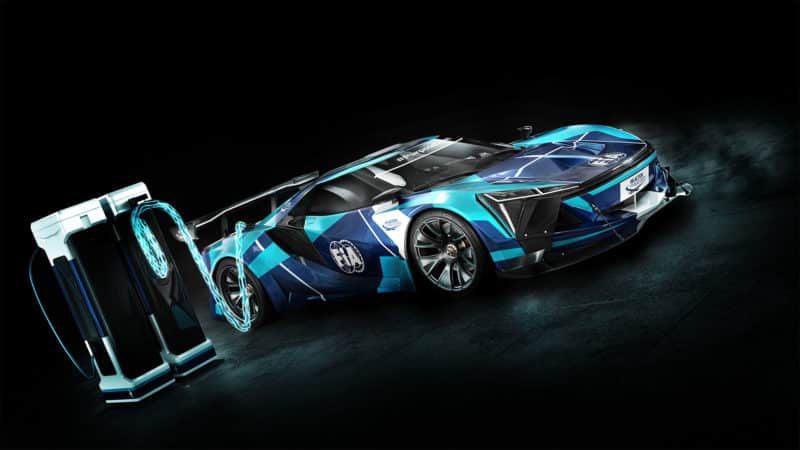Manufacturers will be permitted to build their own batteries for the electric vehicles, but these will have to be based on a layout designed by the Saft firm.
The batteries will be designed to have 700kW peak regen and 700kW fast recharging, enabling them to replenish to 60% capacity in a few minutes during a mid-race pit stop.
The 87kWh battery will be able to provide maximum power of 430kW for just over 12 minutes but this doesn’t take into account the in-race recharging from regenerative braking, or the variable power requirements over a lap.
Manufacturers can design their own powertrains, deciding whether to power two or four wheels with either two or four electric motors. The layout allows torque to be adjusted for each driven wheel, to improve cornering performance
The minimum weight of the cars will vary from 1490 to 1530kg depending on which road model base car the manufacturer decides to enter. The FIA plans to limit the use of expensive materials by allowing the weight threshold to be higher than it currently is for GT3 class.
The championship is intended to be run on permanent racing circuits, the governing body hoping an electric endurance discipline will showcase new standards in range and performance for such vehicles in motorsport. A promoter has yet to be appointed.
FIA Technical Director Xavier Mestelan Pinon stressed the need to make strides in the road-relevance of electric racing, whilst also making the transfer from GT3 racing affordable and relatively straightforward.
“The role of electric propulsion in automotive industry is ever-increasing, as we want motor sport to be relevant to our industry, more and more competitions are going in this direction,” he said.
“The main technical challenges are battery development, battery integration in the cars and fast charging technology. This is crucial to the manufacturers who want to develop road-relevant technology rather than relying on standard components. Also, being able to utilise and adapt GT3 platform ensures that costs are under control.”
“The FIA’s vision is to make motor sport a laboratory for sustainable mobility,” said FIA President Jean Todt. “The announcement of this new electric-powered GT car category is a key milestone serving this goal as it will pave the way for new battery and fast-charging technologies. A perfect illustration of our race-to-road approach.”


